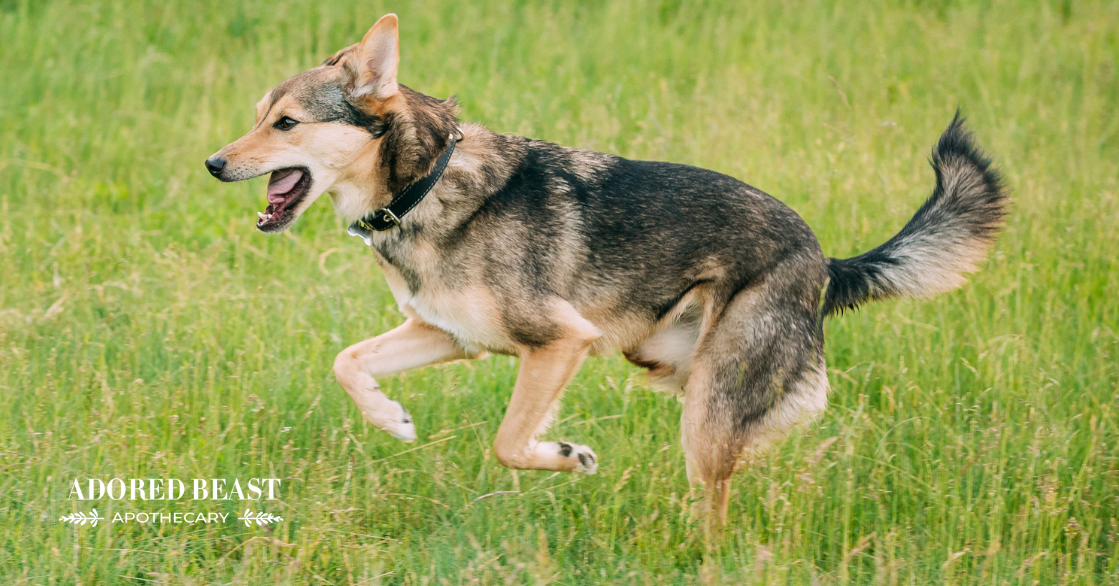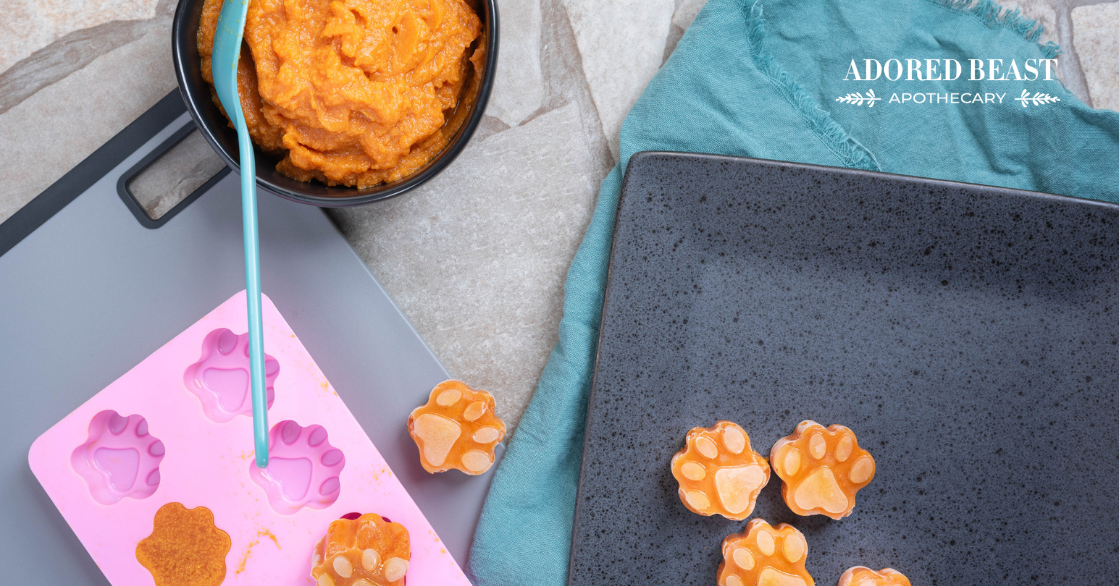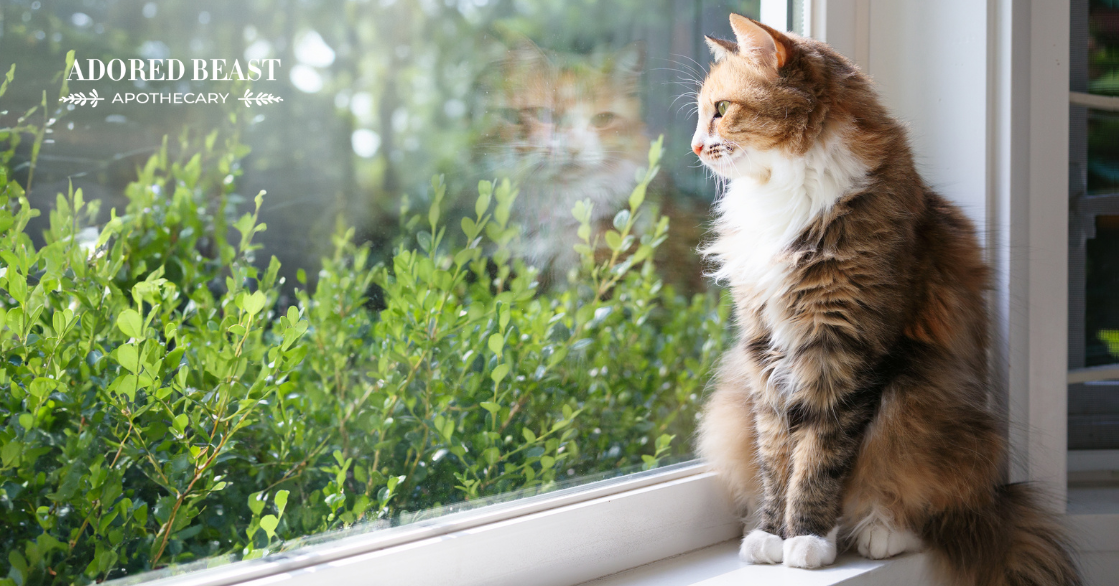Finding out that your dog needs to have a leg amputated can be a frightening or nerve-wracking experience. After all, society has conditioned us to believe that our animals’ abilities are reliant on a “full” set of limbs…
But just as with humans, we know that is totally not true! Three-legged dogs (often called tripods or even more affectionately, tripawds) can lead healthy and fulfilling lives. Most dogs adjust really well to having only three legs.
If your adored beast needs to have a leg amputated or you’re considering adopting a tripod dog, you want to be sure you’re providing them with the proper care and support.
And that’s what we’re talking about today!
Supporting Your Tripod Dog
For a tripod dog, you really want to make sure you do a lot to support their entire body, starting right after the amputation and continuing on for the rest of their life!
1. Supporting the Joints and Muscles
A tripod dog relies heavily on their remaining limbs, which can lead to increased strain on their joints and muscles. You need to support the whole body. Thankfully, there are several ways to do that!
- Joint Supplements: There are many different supplements to consider adding to the diet. Glucosamine and chondroitin supplements are often the first choices, but omega 3s are also really important for supporting the joints (and whole body, in fact). Amino acids are also essential, and collagen supports the connective tissue – that’s vital too. N-Dimethylglycine (DMG) helps support muscle health as well. Our homeopathic Jump 4 JOYnts is also a great addition. These can all help maintain joint and muscle health and reduce the risk of arthritis.
- Weight Management: Keeping your dog at a healthy weight is crucial. You want your dog to be slim and trim. Extra pounds put unnecessary stress on the joints, and you want to try and avoid this as much as possible. Talk to your veterinarian about what an ideal weight would be.
- Physical Therapy: Regular sessions with a veterinary physical therapist can help strengthen the muscles, improve balance, and reduce the risk of injuries. This might include a combination of everything from massage and acupuncture to laser or red-light therapy.
And remember – you’re not just supporting the “lost limb” area – you want to support the health of the other joints too since they’re taking on extra work!
2. Making Access Easier
Navigating the home and yard may be a challenge for a tripod dog, so you want to provide assistance and make modifications wherever you can. Try to ensure their access is not limited and make it easier for them to move around safely.
- Harness: Some dogs will need help walking after surgery, so talk to your vet about whether a special harness would be a good idea.
- Ramps and Stairs: Install ramps over stairs and to access furniture or the car. Look for ramps with non-slip surfaces to prevent accidents.
- Non-Slip Flooring: Hardwood or tile floors can be slippery, so put down rugs or runners to give your dog better traction and prevent falls.
- Accessible Food and Water: Raise the food and water bowls to aa comfortable height to avoid unnecessary strain and make it easier for your pup to eat and drink.
3. Exercise and Activity
Exercise is vital for keeping your tripod dog fit and happy, but it needs to be tailored to their abilities. This isn’t to say tripod dogs can’t take long walks, but in many cases they shouldn’t.
Especially after amputation surgery, you really want to build up the muscles in the remaining limbs and work on core strengthening.
- Shorter, Frequent Walks: Instead of long walks, take your dog on shorter, more frequent outings (no more than 20 minutes each). This reduces the strain on their limbs and prevents fatigue.
- Practice Proprioception (“body awareness”) by balancing on uneven surfaces, like walking over small hedges, up and down curbs, and stepping over sticks and logs.
- Swimming: Swimming is an excellent low-impact exercise that builds muscle without putting stress on joints.
- Interactive Toys: Engage your dog with toys that encourage gentle play and mental stimulation. Puzzle toys and treat dispensers are great for keeping their mind sharp.
4. Emotional Support
Beyond physical health, emotional well-being is equally important. As always, provide plenty of love, attention, and positive reinforcement (as if we even need to say that!). Be patient as they learn to navigate life as a tripod dog.
With the right support and care, tripod dogs can enjoy life to the fullest. By paying special attention to their physical needs, making home adjustments, and ensuring they get appropriate exercise, you can help your three-legged friend live a long, happy, and healthy life. Remember, their spirit, resilience, and adaptability are remarkable – your support can make all the difference.












